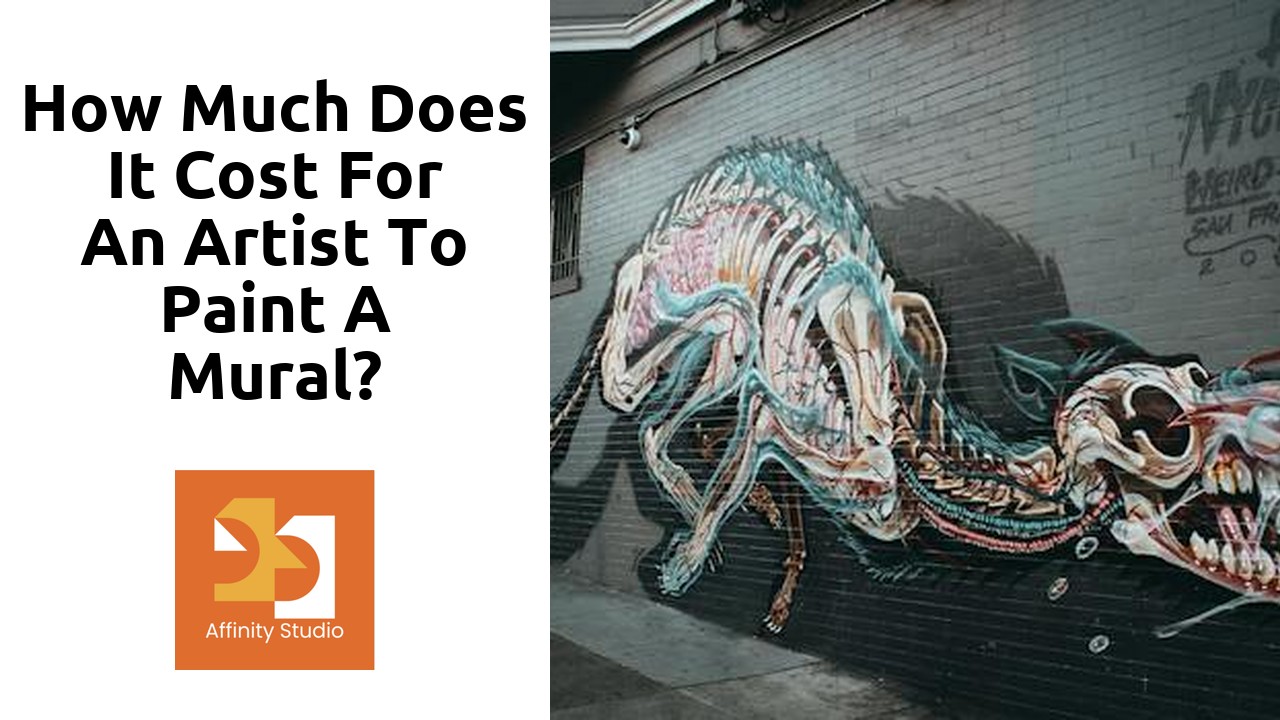Table Of Contents
Exploring the Best Paint Options for Indoor Murals
When it comes to creating indoor murals, choosing the right paint is crucial for achieving the desired results. With so many options available in the market, it can be overwhelming to figure out which paint is best suited for your project. However, by considering a few key factors, you can narrow down your choices and select the paint that will bring your mural to life.
One important aspect to consider is the type of surface you will be painting on. Different paints adhere differently to various surfaces, such as walls, wood, or concrete. For indoor murals, it is best to choose a paint that is specifically formulated for interior use. These paints often have properties that make them suitable for indoor environments, such as low odor and easy application. Additionally, look for paints that offer good coverage and are durable, as indoor murals are likely to be exposed to wear and tear over time.
See here for more great tips.
Unleashing the Power of Colors in Indoor Mural Painting
Color is a fundamental element when it comes to indoor mural painting. It has the power to evoke emotions, create a specific atmosphere, and engage viewers on a deep level. By carefully selecting the right colors for your indoor mural, you can truly unleash the power of expression and make a lasting impact.
When choosing colors for an indoor mural, it is essential to consider the overall theme, mood, and purpose of the artwork. Bold and vibrant colors can add energy and excitement to a space, while softer and more muted tones can create a sense of tranquility and serenity. Additionally, the use of complementary colors can create a visually appealing contrast and enhance the overall aesthetic appeal of the mural. By understanding the significance of different colors and their potential effects, you can strategically incorporate them into your mural to create a captivating visual experience.
Enhance Your Indoor Space with the Perfect Paint for Murals
When it comes to enhancing your indoor space with a mural, selecting the perfect paint is crucial. The right paint can make all the difference in bringing your vision to life and creating a captivating atmosphere. With a plethora of options available, it can be overwhelming to choose the best paint for your indoor mural. However, by considering a few key factors, you can make an informed decision that will ensure your mural stands the test of time.
One of the most important considerations when choosing paint for an indoor mural is durability. Since indoor murals are often subjected to various conditions such as sunlight, humidity, and general wear and tear, it is essential to select a paint that can withstand these factors. Acrylic paints are a popular choice for indoor murals due to their durability, fast drying time, and ability to resist fading over time. Oil-based paints, on the other hand, offer superior durability and are ideal for high-traffic areas, but their longer drying time may not be suitable for all projects. Additionally, considering the type of surface you will be painting on is crucial in determining the paint’s adherence and longevity.
The Ultimate Guide to Selecting Paint for Indoor Murals
One of the most crucial decisions when it comes to creating an indoor mural is selecting the right paint. The type of paint you choose will not only determine the durability and longevity of your artwork but also greatly impact its overall visual impact. With a plethora of options available in the market, it can be quite overwhelming to make a choice. However, by considering a few key factors, you can ensure that you select the perfect paint for your indoor mural.
First and foremost, it is important to consider the surface on which you will be painting. Whether it’s a concrete wall, a wooden panel, or a canvas, different surfaces require different types of paint. For example, if you are painting on drywall, a latex-based paint would be a suitable choice as it provides excellent coverage and is easy to clean. On the other hand, if you are working on a wooden panel, acrylic paint would be recommended for its ability to adhere well to porous surfaces. By understanding the characteristics of your chosen surface, you can narrow down the paint options and ensure a successful outcome for your indoor mural.
Painting a Story: Choosing the Right Paint for Indoor Murals
When it comes to creating indoor murals, selecting the right paint is crucial in bringing your vision to life. The type of paint you choose will not only determine the vibrancy and longevity of your mural but also the ease of application. One of the most popular options for indoor murals is acrylic paint. Known for its fast drying time and versatility, acrylic paint is a favorite among artists. It is available in a wide range of colors and finishes, allowing you to create stunning effects and add depth to your mural. Additionally, acrylic paint is water-based, making it easy to clean up and ideal for indoor use where ventilation may be limited.
Another paint option for indoor murals is latex paint. Latex paint is known for its durability and resistance to fading, making it an excellent choice for long-lasting murals. It is water-based and dries quickly, allowing you to apply multiple layers without waiting for extended periods. Latex paint also offers a wide color palette, giving you the flexibility to bring your artwork to life. Additionally, this type of paint is easy to clean, making it suitable for murals in areas that may be prone to dirt or stains, such as high-traffic locations or children’s rooms.
Dive into the World of Indoor Murals: Picking the Ideal Paint
When it comes to creating indoor murals, selecting the right paint is crucial to achieve stunning results. The type of paint you choose will not only affect the vibrancy and durability of your mural but also its overall impact on the space. There are various paint options available, each with its own unique qualities and characteristics. By understanding the different types of paint and their suitability for indoor murals, you can make an informed decision that will ensure your artwork stands the test of time.
Acrylic paint is a popular choice for indoor murals due to its versatility and durability. This water-based paint is known for its vibrant colors and fast drying time, making it perfect for creating intricate details and layering effects. Acrylic paint also offers excellent adhesion to a wide range of surfaces, including walls, canvas, and wood, making it ideal for indoor mural projects. Additionally, it is resistant to fading and yellowing, ensuring that your mural retains its vibrant colors for years to come.
FAQS
What is the best type of paint to use for indoor murals?
The best type of paint to use for indoor murals is acrylic paint. It is durable, versatile, and easily available in various colors.
Can I use oil-based paint for indoor murals?
While oil-based paint can be used for indoor murals, it is not recommended. Oil-based paint is more difficult to work with, takes longer to dry, and may emit strong odors.
Is it necessary to prime the wall before painting an indoor mural?
Yes, priming the wall before painting is highly recommended. It helps create a smooth surface, improves paint adhesion, and ensures the longevity of your mural.
Can I use spray paint for indoor murals?
Spray paint can be used for indoor murals, but it is best suited for small-scale projects or adding details. It might not provide the desired coverage and control for larger areas.
Do I need to seal the mural after painting?
Sealing the mural is not necessary if you are using high-quality acrylic paint, as it already provides a durable finish. However, if you want extra protection or plan to paint over it in the future, applying a clear sealant is recommended.
How many coats of paint should I apply for an indoor mural?
The number of coats depends on the color and opacity of the paint. Usually, two or three coats are sufficient to achieve a vibrant and even finish. However, lighter colors may require additional coats.
Can I mix different brands or types of paint for my indoor mural?
It is generally safe to mix different brands or types of acrylic paint, as long as they have similar qualities and consistencies. However, it is recommended to test the mixture on a small area before applying it to the entire mural.
How long does it take for the paint to dry on an indoor mural?
The drying time of paint can vary depending on factors such as humidity, temperature, and thickness of the paint layers. On average, acrylic paint dries to the touch within 20-30 minutes, but it may take several hours or even a day to fully cure.
Can I use watercolor or tempera paint for indoor murals?
Watercolor and tempera paint are not ideal for indoor murals. They are not as durable as acrylic paint and may fade or wash off over time. It is best to use acrylic paint specifically formulated for mural painting.
How do I clean and maintain an indoor mural painted with acrylic paint?
To clean an indoor mural painted with acrylic paint, use a soft cloth or sponge and mild soap diluted with water. Avoid using abrasive cleaners or scrubbing too hard, as it may damage the paint. Regular dusting and avoiding direct sunlight can help maintain the mural’s vibrancy.




